Galactan (galactosan) is a polysaccharide consisting of polymerized galactose. In general, galactans in natural sources contain a core of galactose units connected by α(1→3) or α(1→6), with structures containing other monosaccharides as side-chains.
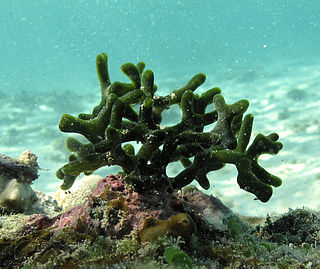
Codium is a genus of edible green macroalgae under the order Bryopsidales. The genus name is derived from a Greek word that pertains to the soft texture of its thallus. One of the foremost experts on Codium taxonomy was Paul Claude Silva at the University of California, Berkeley. P.C. Silva was able to describe 36 species for the genus and in honor of his work on Codium, the species C. silvae was named after the late professor.

The Delesseriaceae is a family of about 100 genera of marine red alga.

Halymenia a genus of a macroscopic red algae that grows in oceans worldwide.

Isabella Aiona Abbott was an educator, phycologist, and ethnobotanist from Hawaii. The first native Hawaiian woman to receive a PhD in science, she became a leading expert on Pacific marine algae.

Rhodomelaceae is estimated to be the largest red algae family, with about 125 genera and over 700 species.
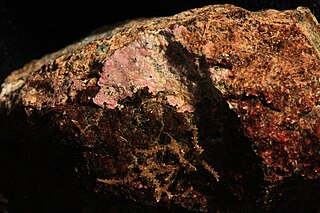
Hildenbrandia is a genus of thalloid red alga comprising about 26 species. The slow-growing, non-mineralized thalli take a crustose form. Hildenbrandia reproduces by means of conceptacles and produces tetraspores.

Laurencia is a genus of red algae that grow in temperate and tropical shore areas, in littoral to sublittoral habitats, at depths up to 65 m (213 ft).
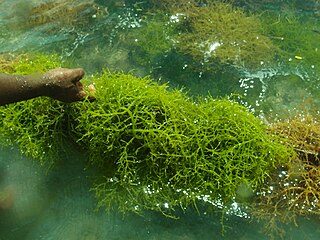
Solieriaceae is a family of red algae in the order Gigartinales.

Gavino Trono Jr. is a Filipino marine biologist dubbed as the "Father of Kappaphycus farming". He was conferred the rank of National Scientist of the Philippines for contributions to the study of tropical marine phycology, focusing on seaweed biodiversity. He is currently a professor emeritus of the University of the Philippines Marine Science Institute.
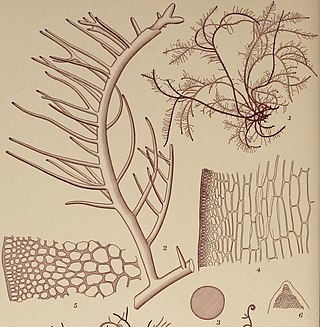
Hypnea is a genus of red algae, and a well known carrageenophyte.
Sirodotia Kylin (1912) is a genus of freshwater red alga which was described by Kylin in 1912, and placed in the Batrachospermaceae family.

Wendy Alison Nelson is a New Zealand marine scientist and world expert in phycology. She is New Zealand's leading authority on seaweeds. Nelson is particularly interested in the biosystematics of seaweeds/macroalgae of New Zealand, with research on floristics, evolution and phylogeny, as well as ecology, and life history studies of marine algae. Recently she has worked on the systematics and biology of red algae including coralline algae, distribution and diversity of seaweeds in harbours and soft sediment habitats, and seaweeds of the Ross Sea and Balleny Islands.

Callithamniaceae is a family of red algae (Rhodophyta) in the order Ceramiales. The family was first described by Friedrich Traugott Kützing in 1843.
Balliales is an order of red algae belonging to the class Florideophyceae. The order consists only one family, Balliaceae. with only one genus - BalliaHarvey.
Titanophora is a genus of seaweeds belonging to family Schizymeniaceae of the order Nemastomatales.
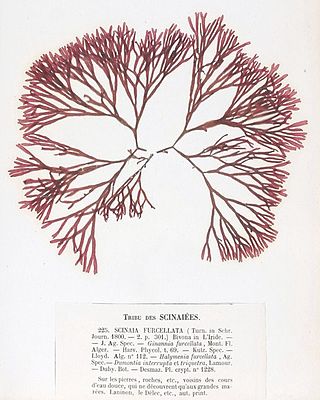
Scinaiaceae is a family of red algae (Rhodophyta) in the order Nemaliales.
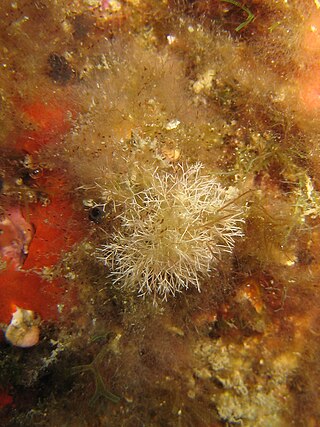
Liagoraceae is a family of red algae (Rhodophyta) in the order Nemaliales. The type genus is LiagoraJ.V.Lamouroux.

Peyssonneliales is a monotypic order of red algae belonging to the class Florideophyceae and the subclass Rhodymeniophycidae. It contains only 1 known family, PeyssonneliaceaeDenizot, M., 1968.















